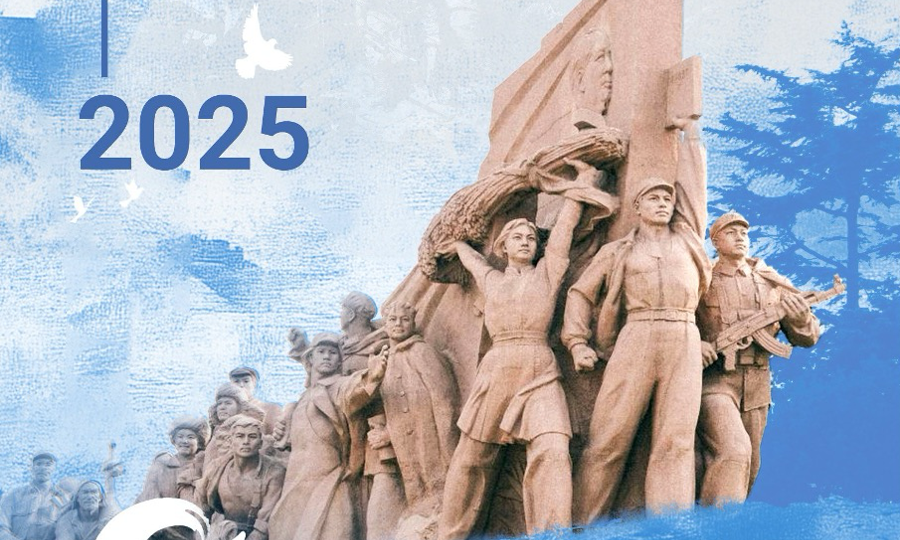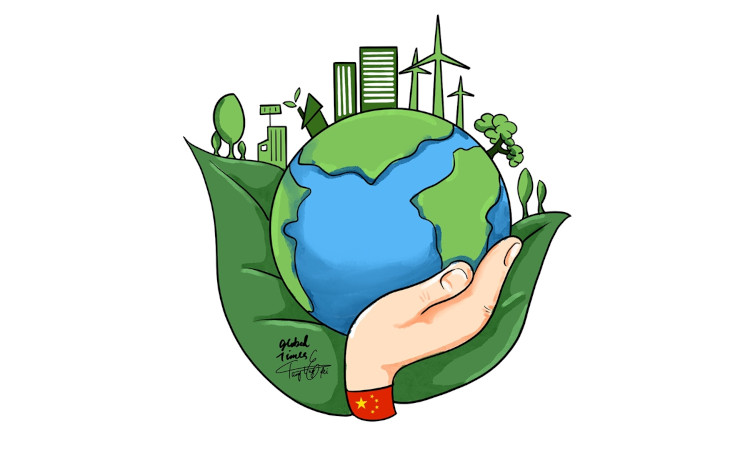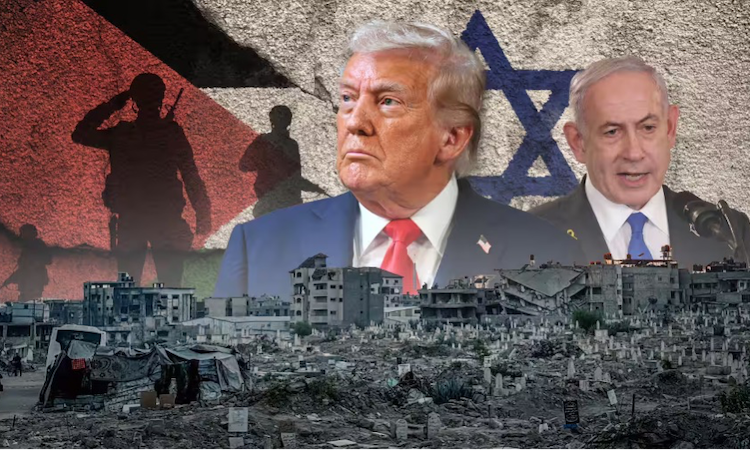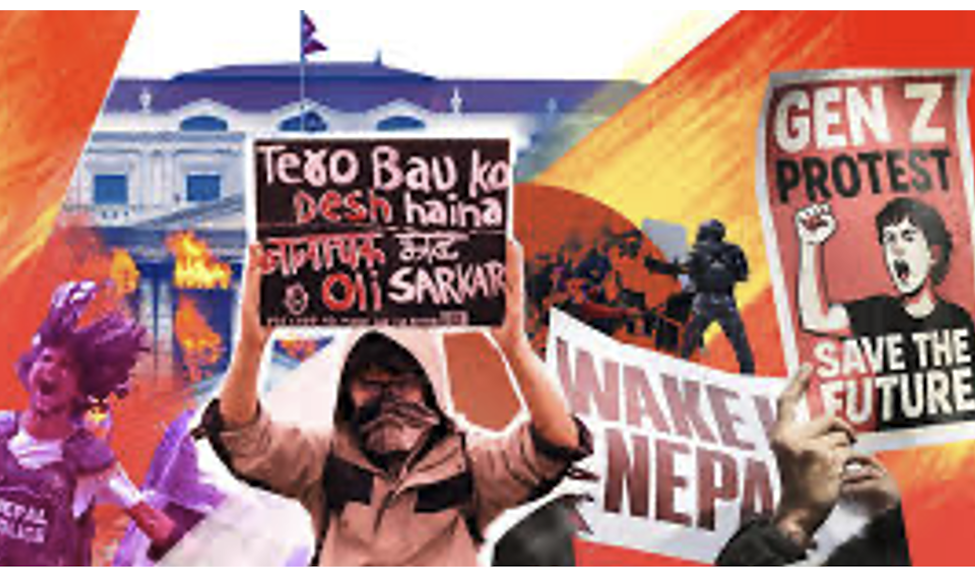On 23 December 2021, the US regime brought into force its so-called ‘Uyghur Forced Labor Prevention Act’ (HR 6256), which effectively bans imports from the Xinjiang Uyghur Autonomous Region (Xinjiang) of the People’s Republic of China and imposes sanctions on foreign individuals who are accused of using ‘forced labour’ in the region.
The act’s stated aims are:
- To strengthen existing legislation prohibiting the import of goods manufactured wholly or in part by ‘forced labour’.
- To lead the ‘international community’ in ending forced labour practices.
- To work to prevent, denounce and end ‘human trafficking’, including ‘forced labour’.
- To address ‘gross violations of human rights’ in Xinjiang.
The assumption underpinning the legislation is that that all goods or services originating in Xinjiang have been made using forced labour, so that anyone wanting to import anything from the region will be required to provide “clear and convincing” evidence that this is not the case.
But proving an absence of something is always a tall order, especially when the default position is that a crime of some kind is probably being committed, and flies in the face of the basic juridical principle of ‘innocent until proven guilty’.
The latest legislation extends an existing ban, enforced since December 2020, which specifically targets Xinjiang cotton, and which was brought into effect at the very end of the presidency of Donald Trump (and naturally continued under Joe Biden).
Issues around the presumption of guilt were summed up in a CNBC article at the time the cotton ban was enacted:
“‘That pretty much blocks all Chinese cotton textile imports,’ said a China-based cotton trader, who asked not to be identified because of the sensitivity of the issue.
“Identifying cotton from a specific supplier will sharply raise manufacturing costs, and only the few large companies with fully integrated operations across the complex textile supply chain could guarantee that no XPCC [Xinjiang Production and Construction Corps, one of China’s largest manufacturers] product has been used, the trader said.
“‘It really depends on how much proof they want. If they want real proof that this cotton has not been used, that’s going to be extremely difficult,’ he added.” (US bans cotton imports from China producer XPCC citing Xinjiang ‘slave labour’ 3 December 2020)
Imperialist lie machine in action once again
Taken at face value, this act would appear to be a response aimed at rectifying some terrible wrong. Those who are aware of the bloody history of US imperialism, however, must look past the claims being made and find the imperialists’ real motives.
The evidence for ‘forced labour’, ‘genocide’ and ‘gross violations of human rights’ is far from ‘clear and convincing’, coming as it does from a tiny handful of sources that all appear to be funded directly and indirectly by the US state department. Much of the ‘proof’ for these accusations actually comes from a single ‘expert’, one Adrian Zenz.
A German far-right fundamentalist Christian, Adrian Zenz is the source of nearly every false claim aimed at the Communist Party of China and its government in Xinjiang. He first appeared on the scene in 2007, a very willing and no doubt handsomely rewarded propagandist for US imperialist interests, claiming that he had been ‘led by God’ to destroy China.
Zenz is also a senior fellow at the Victims of Communism [!] Memorial Foundation (VOC), a US-funded anticommunist group that lays the blame for everything from the deaths of Nazi soldiers during WW2 to the global fatalities caused by Covid-19 at the feet of communism.
Zenz doesn’t let his lack of understanding of the Chinese language or his inability to understand simple demographic data get in the way of claiming ‘expert knowledge’ of development in the Xinjiang region.
Zenz presents information about the slowing of population growth (a near universal hallmark of a developing country) as proof of population decline resulting from an intentional policy by the CPC to eradicate the, mostly muslim, Uyghur population as ‘proof’ of a genocide in Xinjiang. Testament to the flimsiness of this claim is the huge increase in the region’s population – from 4.78 million in 1953 to 25.85 million in by 2020 – and the exemption of ethnic minorities from policies that formerly restricted family sizes in the majority Han population. (Xinjiang population dynamics and data, State Council Information Office of the People’s Republic of China, September 2021)
Another easily debunked story is Zenz’s attempt to use official CPC statistics on birth control. Fudging the maths, Zenz has come up with a claim that 80 percent of all intrauterine devices (IUDs) in China have been administered to women in Xinjiang. In fact, the true figure is 8.7 percent!
The laughable nature of his ‘evidence’ is no bar to his utility to imperialism. Zenz is widely cited by most bourgeois news outlets in the west – in particular his often-repeated allegation that “one million Uyghur are held in prisons camps”.
This claim is ‘evidenced’ by satellite images of nondescript buildings, which on-ground inspections have revealed to be everything except what has been claimed, from chicken farms to schools! Nevertheless, the dramatic lie continues to be repeated, aligned as it is with a narrative that serves imperialist interests, warping China’s immense success in combatting insurgent terrorism into a horror story for the benefit of western workers.
The Chinese government has indeed set up re-education centres to rehabilitate misguided Xinjiang citizens who had been radicalised but later returned from regions where they had been trained and indoctrinated. These unfortunates had been duped by Turkish and US-funded outfits like Isis and their ilk into joining the kind of death squads that spread mayhem, death and destruction in Syria, Iraq, Libya, Afghanistan and elsewhere.
Weijian Shan, chairman and CEO of PAG, an Asia-focused private equity firm, has spoken about the scale and violence of these terror attacks on Chinese soil:
“Starting around 2007, it became increasingly dangerous to visit Xinjiang. The region was rocked by a spate of horrific terrorist attacks, resulting in over a thousand deaths and countless injuries.
“For example, on 5 July 2009, there was a riot in the capital city of Urumqi. One hundred and ninety-seven people were hacked, beaten or burned to death and 1,721 were injured. On 22 May 2014, two car bombings in the same city killed 43 people and wounded 94. There were dozens of other attacks.
“The extreme violence was not just confined to Xinjiang. In 2013, five people died and 38 were injured in a suicide attack by three Uyghurs in Beijing. In 2014, a killing spree by eight knife-wielding Uyghurs left 31 people dead and 141 wounded at a Kunming railway station.
“A 2016 study commissioned by the US government noted that, from 2012 to 2014, domestic attacks in China ‘apparently became more frequent, more geographically dispersed, and more indiscriminately targeted’. The perpetrators, in many cases, were radicalised members of the Uyghur ethnic group.” (Xinjiang: what the west doesn’t tell you about China’s war on terror)
Displaying outstanding patience, solid knowledge of the Xinjiang region and a most laudable restraint, coupled with the trust gained among the people (greatly in part to the extensive poverty reduction and doubling of life expectancy since the 1950s), the CPC, working with and for the citizens of Xinjiang, has made the area safe once more.
China has found a method to reintegrate returning radicals back into their communities using a mixture of secular education, vocational training and work opportunities – a method that removes most of the drivers of radicalisation: poverty, hunger and lack of other opportunities. Compare this with the atmosphere of fear and the treatment of people of foreign descent in the west as a result of the so-called ‘war on terror’.
Australia, a junior partner in the imperialist anti-China alliance
The ‘forced labour’ accusations were given bourgeois ‘legitimacy’ by a report written by the Australian Strategic Policy Institute (ASPI), which describes itself as an “independent, non-partisan think tank that produces expert and timely advice for Australia’s strategic and defence leaders”.
As always, we need to look deeper – or in this case, follow the money. Michelle Fahy of Declassified Australia has broken down the sources of ASPI’s funding:
“The single largest source of ASPI’s funding in 2020-21, beyond its core funding, was from the US government’s departments of defence and state ($1.58m), followed by additional funding from defence ($1.44m) and other federal government agencies ($1.18m). The NSW and Northern Territory governments provided $445,000.
“In the private sector, the largest source was social media, tech and cybersecurity companies ($737,362), with Facebook ($269,574), Amazon ($100,000) and Microsoft ($89,500) being the largest. From the arms industry, ASPI received $316,636, with more than two-thirds of that coming from two of Australia’s largest defence contractors, Thales ($130,000) and BAE Systems ($90,000). In 2019-20, Twitter gave ASPI $147,319 for its cyber research.
“Significantly, Twitter last week announced a partnership with ASPI said to be dealing with misinformation from the Chinese communist party that was seeking to counter evidence of human rights abuses in Xinjiang. As a result of ASPI’s research, thousands of ‘state-linked accounts’ were shut down by Twitter.”
Why would all these war profiteers and mass exploiters of workers, with zero interest in human rights or lives, be so interested in an ‘independent think tank’?
ASPI’s Uyghurs for sale report built on the shaky foundations of Zenz’s prison camp claims, with a similar reliance on anecdotes and a liberal misinterpretation of statistics to reach its conclusion that Uyghur muslims are being used as ‘forced labour’ (ie, as slaves).
This ‘forced labour’ in reality comprises vocational training with guaranteed employment and accommodation – a fate our free British workers can only dream of!
A legal assessment and report rebutting the claims in the ASPI report was made by the Co-West-Pro consultancy, an Australian-based, counter western propaganda initiative founded by independent western propaganda analyst and international law advocate Jaq James. It points out that the APSI itself is in breach of human rights, since its report has negatively affected the Uyghur people’s right to work – an internationally-recognised and protected human right.
As capitalists have had to move production elsewhere or face economic pressure from the US financial machine, as well as populist pressure from various ‘human rights’ groups in the west, many Uyghur people have faced job losses and their attendant issues.
Clearly, the US hopes to reverse recent gains in employment and living standards, and to create the conditions that will enable it once again to radicalise poor unemployed workers and peasants in Xinjiang.
Why Xinjiang?
VI Lenin, over 100 years ago, with a foresight that would put Nostradamus to shame, shed some light on this question:
“The characteristic feature of imperialism is precisely that is strives to annex not only agrarian territories, but even most highly industrialised regions (German appetite for Belgium; French appetite for Lorraine), because (1) the fact that the world is already partitioned obliges those contemplating a redivision to reach out for every kind of territory, and (2) and essential feature of imperialism is the rivalry between several great powers in the striving for hegemony, ie, for the conquest of territory, not so much directly for themselves as to weaken the enemy and undermine his hegemony.” (Imperialism, the Highest Stage of Capitalism, 1916, Chapter 7)
Xinjiang has many attributes that monopoly capitalist and its agents would like to take advantage of – or at the very least would like to deny to the Chinese people.
The region has vast natural resources. An estimated 68m hectares of developable agricultural land, allowing the region to be agriculturally self-sufficient; vast mineral deposits, including 730m tons of iron ore, 318m tons of salt, and many of the non-ferrous metals required for modern manufacturing such as gold, zinc, nickel, chrome, etc; and colossal oil and gas reserves.
Xinjiang’s heavy industry includes iron and steel works, a cement factory at Urumqi and a farm-tool plant at Kashgar. Several petrochemical plants have been built across the region. Agricultural and animal product processing sites have been set up near where they are made in order to increase productive efficiency.
On top of this, 45 percent of the global production of solar-grade polysilicon in 2020 was in Xinjiang, helping China to outstrip every other country in the creation of solar panels and forcing even those aligned against it to place orders.
Resources and manufacturing rivalry doesn’t tell the whole story, though. The Xinjiang region sits at the crossroads of Asia (bordering India, Pakistan, Afghanistan, Tajikistan, Kyrgyzstan, Kazakhstan, Russia and Mongolia) and is absolutely central to China’s Belt and Road Initiative (BRI).
By shifting a large proportion of the vulnerable (to the US regime’s gunboat diplomacy) sea leg of international trade routes onto a rapidly expanding rail and road alternative, the BRI will reduce costs and transport times for goods across the entire Eurasian land mass and beyond. And as joining the network doesn’t entail the crippling cost of foregoing sovereignty and being at the mercy of foreign capital, countries that sign up to it have everything to gain from the consequent development expertise and funding.
Imperialism cannot match this offer; it can only operate a system of uneven development. Under imperialist ‘development’, the riches of the world accrue to the pockets of a few multibillionaires while whole countries whose resources are being looted and people exploited to produce these vast fortunes nevertheless remain poor and backward.
Creating strife in the region is an attempt to contain and reverse the advances being made by China and its allies, and to disrupt the progress of the BRI. Only this explains the drive to foment extremism in Xinjiang, the economic sanctions being slapped on China for having had the temerity to deal with that extremism, and the efforts to manufacture consent in the imperialist countries for military intervention under the auspices of ‘human rights’.
This is the imperialists’ multi-pronged attempt to maintain and expand their spheres of influence as they battle with their system’s endemic crisis of overproduction and its ever-falling rate of profit.
Meanwhile, every country that takes up a mutually beneficial trade deal with China is another country that is developing its ability to stand up to the US, denying the imperialists access to the footholds necessary for their economic and military domination.
Imperialism is our common enemy
The ‘forced labour’ narrative is not only a call for war, or to recruit misguided human rights activists into the imperialist effort to contain China’s development, it also acts as a smokescreen to hide the real forced labour of capitalist production (wage slavery, aka capitalist freedom) and to convince workers that there is no alternative to the system under which they currently languish.
But Karl Marx long ago exposed the substance behind the words about ‘free labour’ under capitalism:
“We also saw that capital – and the capitalist is merely capital personified and functions in the process of production solely as the agent of capital – in its corresponding social process of production, pumps a definite quantity of surplus labour out of the direct producers; capital obtains the surplus without an equivalent, and in essence it remains forced labour – no matter how much it may seem to result from free contractual agreement.” (Capital Volume 3, 1894, Chapter 48, author’s emphasis)
The struggle of the people of Xinjiang, and of all those who are standing up to US hegemony and striving to break the chains of imperialist domination, is the same struggle we are fighting at home in Britain.
Under the dictatorship of capital, workers are merely the sellers of their labour-power, which is bought (or not) as capital sees fit. If it is bought, they will sweat to make the rich richer. If it is not bought, they are cast onto the scrapheap of unemployment and misery. Either way, their position will only get worse.
How much longer we are prepared to accept such a state of affairs is up to us.














